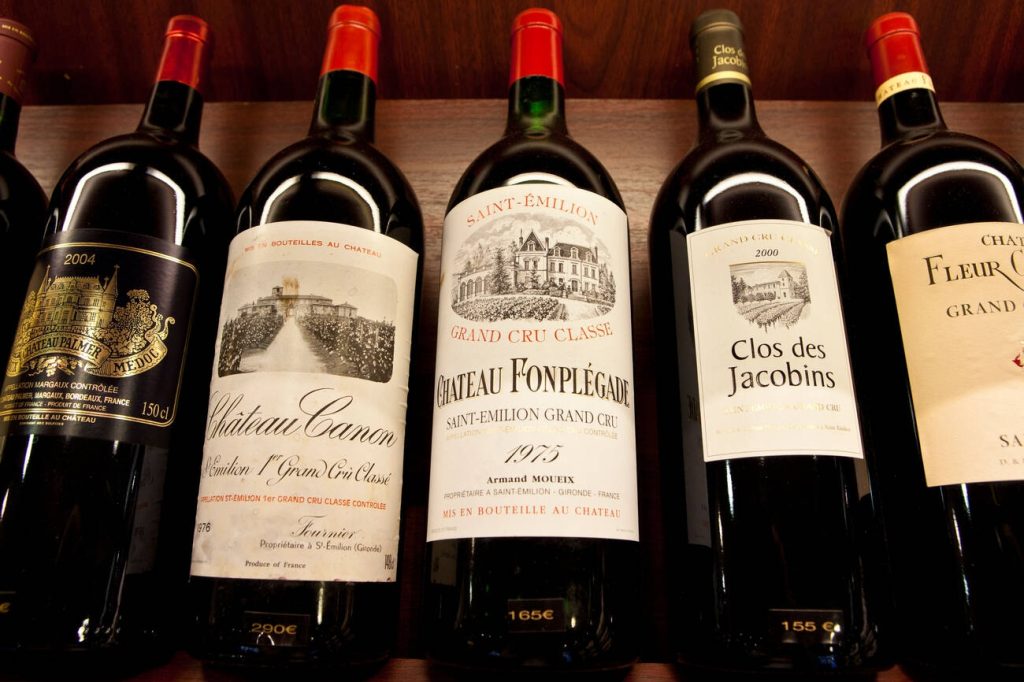Have you ever been captivated by the enchanting taste and allure of French wines? Delving into the mystique of terroir, you’ll uncover the secrets behind their exceptional quality. Terroir, a blend of soil, climate, and geography, creates the perfect environment for grapevine cultivation. Calcium-rich soils provide a favorable foundation, enhancing fruit quality and warding off vine diseases. By understanding how calcium management and other terroir factors shape French wines, vineyard managers can make informed decisions for sustainable and resilient vineyards. Get ready to embark on an extraordinary journey through the world of French terroirs.
Contents
- The Definition and Importance of Terroir
- Soil as a Key Terroir Factor
- Climate and Its Influence on Terroir
- Biodiversity and Its Role in Terroir
- Human Factors and Terroir Expression
- Terroir and Vine Physiology
- Terroir and Grape Chemistry
- Terroir and Aromas in Wine
- Quantifying Terroir Parameters
- The Impact of Terroir on French Wines
- Terroir Management in French Vineyards
- Exploring the Diversity of French Terroirs
The Definition and Importance of Terroir
Terroir, which refers to the influence of soil, climate, and geography on the taste and quality of wines, is crucial for understanding the distinctiveness and characteristics associated with French wines. French wine is renowned worldwide for its exceptional quality and diverse flavors, and this can be attributed to the unique terroir found in different regions of France. The vines of France are deeply rooted in their terroir, as each region has its own specific soil composition, climate patterns, and geographical features that shape the grapes grown there. From Burgundy’s Pinot Noir to Bordeaux’s Cabernet Sauvignon blends, the terroir of each region contributes to the specific characteristics found in French red wines. It is this strong connection between France and wine that makes exploring the concept of terroir so fascinating.
Soil as a Key Terroir Factor
Soil composition greatly influences the availability of nutrients and water drainage, affecting grapevine growth and the quality of wine. The type of soil in which grapevines are planted can have a significant impact on their health and productivity. Different soil types, such as limestone, clay, and gravel, impart distinct characteristics to wines. For example, limestone-rich soils tend to produce wines with high acidity and minerality, while clay soils can result in wines with more body and structure. Additionally, soil composition affects root development and nutrient uptake by the vines. Soil that is rich in organic matter provides essential nutrients for the vines to thrive. Proper drainage is also crucial for preventing waterlogged conditions that can lead to disease or stunted growth. Therefore, understanding the soil composition is essential for vineyard managers to make informed decisions about vine care and ultimately produce high-quality wines.
Climate and Its Influence on Terroir
Climate significantly impacts the ripening process of grapes and ultimately shapes the flavors and characteristics of wines. The temperature, rainfall, sunlight exposure, and seasonal variations all play a crucial role in determining the quality and style of wines. In cool climate regions, grapes tend to have higher acidity and lower alcohol levels, resulting in crisp and refreshing wines. On the other hand, warm climates lead to riper grapes with more sugar content, producing fuller-bodied wines with higher alcohol levels. Additionally, the concept of mesoclimate within vineyards further influences terroir expression by creating microclimates that can produce unique flavors in specific areas. As climate change continues to pose challenges to wine regions worldwide, winemakers are adapting their practices to maintain the desired grape characteristics and preserve the distinctiveness associated with their terroir.
Biodiversity and Its Role in Terroir
Biodiversity within vineyards, including the variety of flora and fauna present, contributes to the overall health and complexity of grapevines and can enhance the unique characteristics found in wines. Here’s why it matters:
- Ecosystem Balance: A diverse ecosystem helps maintain a natural balance within vineyards, reducing the need for pesticides or other interventions that can negatively impact wine quality.
- Pollination: Bees and other pollinators play a crucial role in fertilizing grape flowers, leading to better fruit set and higher yields.
- Pest Control: Beneficial insects, birds, and bats help control pests that can damage grapevines. This reduces the reliance on chemical pesticides and promotes sustainable farming practices.
- Microbial Diversity: The presence of diverse microbial communities in vineyard soils contributes to soil health and nutrient cycling, ultimately influencing grapevine health and wine quality.
Human Factors and Terroir Expression
Human interventions, such as vineyard management practices and winemaking techniques, have a significant influence on the expression of terroir. As a winemaker, your decisions regarding pruning, irrigation, canopy management, and fermentation methods can shape the unique characteristics of your wines. By carefully managing these factors, you can enhance or mask the terroir expression in your final product. Traditional winemaking practices passed down through generations also play a role in preserving regional terroir identities. Your expertise and craftsmanship are essential in translating the potential of terroir into exceptional wines. Remember that every decision you make during the vineyard management and winemaking process has an impact on how the terroir is expressed in your wines. Embrace this responsibility and strive to create wines that truly reflect the essence of their origin.
Terroir and Vine Physiology
To truly understand the impact of terroir on vine physiology, you must delve into the intricate relationship between soil composition, climate conditions, and microbiota. Here are four key points to consider:
- Water deficit stress and low nitrogen availability limit yield and vigor, enhancing terroir expression.
- Environmental factors play a significant role in the composition of vines and grapes.
- While there is no scientific evidence proving a terroir effect through sensory markers in wine, it does influence grape chemistry and contributes to wine typicality.
- Terroir also plays a significant role in the aromas of grapes and wines, with specific organoleptic characteristics being influenced by environmental factors such as soil and climate.
Understanding these aspects of terroir will give you deeper insights into how vine physiology is shaped by its environment, ultimately influencing the quality and character of French wines.
Terroir and Grape Chemistry
When exploring the impact of terroir on grape chemistry, you’ll discover how environmental factors like soil composition and climate influence the composition and characteristics of grapes. The soil composition affects the availability of nutrients and water drainage, which in turn affects grapevine growth and wine quality. Different soil types impart distinct characteristics to wines. Climate plays a significant role in grape ripening and wine quality, with cool climates producing wines with higher acidity and warm climates resulting in riper grapes and fuller-bodied wines. The combination of these factors influences grape chemistry, including the synthesis of secondary metabolites like polyphenols and aroma compounds. Understanding how terroir affects grape chemistry is vital for winemakers to make informed decisions about vineyard practices, grape varieties, and winemaking techniques to produce exceptional wines that reflect their unique terroir.
Terroir and Aromas in Wine
Explore how environmental factors, such as soil and climate, infuse distinct aromas into grapes and wines.
- The soil composition, including its mineral content and water-holding capacity, affects the availability of nutrients to grapevines. This influences the synthesis of aroma compounds in grapes.
- Climate conditions, such as temperature and rainfall patterns, impact vine development and grape ripening. These factors influence the production of volatile compounds that contribute to wine aromas.
- Different grape varieties have a natural affinity for specific terroirs, resulting in unique aromatic profiles. For example, certain regions are known for producing wines with floral or fruity aromas due to their specific environmental conditions.
- Winemaking techniques also play a role in enhancing or preserving the aromas derived from terroir. Fermentation methods and aging processes can further develop or highlight specific aromatic characteristics in wine.
Understanding how terroir influences wine aromas allows enthusiasts to appreciate the diversity of flavors found in different regions and explore their preferences based on personal aromatic preferences.
Quantifying Terroir Parameters
Quantifying terroir parameters involves the use of tools and assessments to understand the effects of environmental factors on vine water status. By measuring vine water status, winemakers can gain insights into how terroir influences grape development and wine quality. Tools such as pressure chambers and soil moisture sensors help monitor the water stress levels in vines, providing valuable information about their physiological response to their environment. Additionally, assessments like leaf stomatal conductance and sap flow measurements provide data on water movement within the plant. These quantitative measures allow winemakers to make informed decisions regarding irrigation practices and canopy management strategies, ensuring that the unique characteristics of terroir are reflected in their wines. Through quantifying terroir parameters, winemakers can harness the full potential of their vineyards and create wines that truly embody the essence of their unique growing regions.
The Impact of Terroir on French Wines
The influence of terroir on the flavors and characteristics of wines from France is widely recognized in the viticulture industry. When it comes to French wines, terroir plays a significant role in shaping their unique taste and quality. Here are 4 key ways in which terroir impacts French wines:
- Soil Composition: The specific types of soil found in different regions of France contribute distinct flavors and characteristics to the grapes grown there.
- Climate: The varying climatic conditions across different wine regions in France greatly influence grape ripening, acidity levels, and overall flavor profiles.
- Grape Varieties: The selection of grape varieties that thrive in specific terroirs further enhances the expression of unique flavors and aromas in French wines.
- Winemaking Techniques: Winemakers in France have honed their craft over centuries, adapting their techniques to best highlight the qualities imparted by each terroir, resulting in exceptional wines that reflect their origin.
In short, exploring French wines allows you to experience firsthand how terroir can shape and elevate the flavors and characteristics of these renowned vintages.
Terroir Management in French Vineyards
Now, let’s dive into the world of French vineyards and explore how terroir is managed. As a wine enthusiast, you may be curious about the meticulous practices employed in French winemaking. In France, terroir management is a highly regarded art form that ensures the preservation of unique flavors and characteristics in their wines. Vineyard managers carefully analyze soil composition, topography, and microclimate to create the perfect environment for grapevine cultivation. They understand that specific regions have distinct terroirs that contribute to the quality and taste of their wines. By tailoring vineyard practices to optimize terroir expression, French winemakers maintain consistency and authenticity in their wines. From selecting suitable grape varieties to implementing sustainable farming techniques, every decision made revolves around honoring and enhancing the mystique of terroir in French wines.
Exploring the Diversity of French Terroirs
Take a moment to appreciate the rich diversity of terroirs found in France and how they contribute to the unique flavors and characteristics of their wines.
- The varied climates across different regions in France result in distinct growing conditions for grapevines, influencing flavor profiles.
- The different soil compositions, such as limestone, clay, and gravel, add complexity and depth to French wines.
- The microclimates within vineyard sites create specific environmental conditions that shape the grapes’ development and ultimately affect the wine’s taste.
- Vineyard management practices, passed down through generations, further enhance the expression of terroir by maintaining traditions that have evolved over time.
The combination of these factors results in an unparalleled range of French wines that showcase the intricate relationship between terroir and wine production. So next time you enjoy a glass of French wine, remember that it is a reflection of centuries-old knowledge and nature’s influence on the land.




